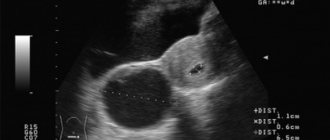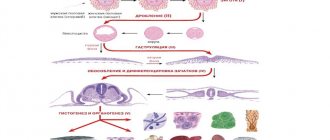Causes of swollen legs
During pregnancy, severe swelling of the legs is a bad thing and should not be taken as normal. There is no need to panic, if you monitor your health, it is possible to control the processes and bring your shins and ankles to their normal state. It is worth contacting a gynecologist, asking for advice, you may have to undergo an ultrasound of the kidneys and take blood tests. There are two types of edema.
Swollen legs
Physiological phenomena
It is typical for pregnant women who have experienced the current symptoms previously (for example, during the menstrual cycle). As a rule, the phenomenon is accompanied by heaviness in the limbs and unreasonable fatigue. Swelling can accompany the expectant mother during the weeks of waiting for the baby. The reason for these changes:
- Increased load on the legs due to large weight gain;
- Accumulation of fluid and sodium in the body due to excessive drinking, eating salty foods;
- Increased activity during pregnancy leads to increased stress on the legs.
Pathological changes
You need to be wary if we are talking about pathological edema. A serious moment, indicating dropsy or gestosis. The first does not cause much concern among doctors, the second will lead to pathologies of the mother and fetus. Doctors don’t talk about the disease to young mothers so as not to scare them! Such changes are accompanied by swelling of the legs and other symptoms:
- sudden weight gain (from 20 kg);
- swelling of the body, including the face, eyelids;
- Difficulty putting on shoes and bending at the waist.
Difficulties during pregnancy
Edema in late pregnancy - normal or pathological?
Not every clinical case of edema during pregnancy indicates the presence of complications. The third trimester is characterized by an increase in the size of the uterus, which increases pressure on the ureters. A woman has problems urinating and swelling occurs.
This problem is also diagnosed against the background of weight gain. For this reason, pregnant women's weight control is mandatory. To avoid edema or reduce its severity, doctors recommend sticking to a dairy-vegetable diet.
On the contrary, there is no need to limit the amount of liquid. Doctors advise drinking up to two liters of water per day, but at the same time maintaining strict control over the amount of urine. Its volume should be at least 60% of the amount of fluid consumed.
The situations described above are a clear example of physiological edema. You can reduce their manifestation by adjusting your diet and regimen. When this approach does not produce the desired results, you should consult your doctor. Edema is dangerous not only due to physical or aesthetic discomfort. They are often a symptom of serious pathologies (varicose veins, renal failure, gestosis).
Late gestosis is considered the most common and at the same time dangerous disorder. If the woman’s general condition is satisfactory, but severe swelling is observed, the gynecologist should be informed about this. If this is not done in a timely manner, such neglect of the baby’s own health and well-being can affect the mother-placenta-fetus system. Violation of this pattern often leads to oxygen starvation of the child, which affects his development.
Condition of a pregnant woman in the third trimester
Week 29 symbolizes the beginning of the main, third trimester. Most women begin to swell their limbs at 30-31 weeks. A sharp weight gain in a baby occurs only from 32 weeks! You shouldn’t do too much or worry in advance, the average figures are given, the baby is able to gain weight a little earlier or a little later. The mentioned period is characterized by the risk of premature birth. It is worth being alert, monitoring your own condition and the behavior of the child in the womb.
In the eighth month, from 33 to 36 weeks, the baby’s active growth begins. At the indicated time, fingernails appear, grow on the toes, many reflexes develop, vellus hair disappears, cartilage becomes elastic, and a sleep schedule is developed. A pregnant woman begins to strongly feel the baby's kicks during the period of activity, and heartburn is often added. Already at 34-35 weeks, a woman goes on maternity leave and has a lot of free time. To avoid swelling, try to follow the recommendations:
- spend more time in the fresh air;
- walk slowly, take your time;
- communicate with your baby while sitting on a bench;
- listen to music while walking;
- watch your diet.
Walking at 38 weeks of pregnancy
In the ninth month, from 37 to 40 weeks of pregnancy, swelling can be accompanied by pain in the legs. Now try to walk less, but do not limit your time in the fresh air. Just take a loved one, a folding mat, and sit on a bench in the park. Observe weather changes and children playing on the playground. Try to follow the menu, control the flow of fluid into the body. Take into account the water, milk, tea, soups you drink, especially at 38-39 weeks.
By the end of 9 months, the woman ends up in the maternity hospital. However, many pregnant women, especially first-time mothers, carry their babies to term. And they swell for the first time at 40-41 weeks. By the specified date, swelling indicates an imminent birth; by the day of discharge (on average, 3-4 days after birth) the swelling will subside. If a woman is worried and cannot find peace, she should contact a gynecologist to receive a referral for hospitalization. The woman in labor will lie in the pathological department until delivery, under the strict guidance of doctors.
Classes for pregnant women
Drug treatment of edema
Treatment recommendations for combating swelling are most often limited to those outlined above. Some women are advised to wear compression stockings and use special anti-edema products (gels, ointments). If complications and second-degree gestosis occur, drug treatment cannot be avoided. It is important to understand that gestosis poses a threat not only to the expectant mother, but also to her baby in the womb.
Typically, women with this diagnosis are prescribed diuretics (Canephron, Fitolysin). These drugs normalize kidney function and have anti-inflammatory and antiseptic effects. Taking multivitamin complexes to improve uteroplacental blood flow is also indicated. With the help of droppers, the deficiency of protein and fluid in a woman’s body is restored. For high blood pressure, antihypertensive drugs are prescribed.
Helping yourself during pregnancy
Remember, taking care of yourself and the child lies on the shoulders of expectant mothers. Take care of proper nutrition to prevent negative changes in the condition of your legs. From the beginning of pregnancy:
- Limit fluid intake to 1.5 liters. in a day;
- Try to eat less salt, salty drinks and foods;
- Give up harmful foods in favor of healthy ones.
- Citrus fruits, chocolate, animal fats, sausages, smoked, fatty, hot, spicy foods, peanuts, dishes with vinegar are considered harmful;
- healthy foods - broccoli, lettuce, green vegetables, seaweed, bananas, baked jacket potatoes, beef, fish, seafood, brown rice, dairy products.
Active mobility is encouraged during these 9 months. Pregnancy is not a reason to sit on a chair. You should absolutely not eat for two. It is enough to increase your usual diet by 10 percent, no more! Now many women understand the harm of overeating; overweight, edematous pregnant women are more difficult to meet.
Walking alone is not the only way to stay physically active. There are well-known areas for maintaining the body shape of pregnant women: fitness, water aerobics, swimming, yoga. Sign up for courses for pregnant women, get information about the dangers of edema and ways to avoid this unpleasant phenomenon. Courses are free from antenatal clinics or paid from reproduction and planning centers. The latter are fuller, richer and more interesting.
It is important to monitor the amount of urine excreted. It is recommended for women who are prone to obesity, so as not to confuse weight gain with stagnation of urine. Remember, a baby at 38 weeks of pregnancy already secretes 500 ml of fluid exiting through the mother’s ureter. If you notice that you drink more than you excrete, perhaps the uterus is putting pressure on the ureters, causing the process of urination to become disrupted. Then 2-3 times daily for 7-10 minutes, stand in a position that is beneficial for the body:
- get down on your knees, legs can be spread to a comfortable width;
- Gently bend forward, rest your hands in front of you;
- Bend first one arm at the elbows, then the other. Secure yourself in a stable position;
- Try to keep your back straight, sometimes it is permissible to slightly arch or bend it.
Knee-elbow position
To avoid feeling bored, take a magazine and read interesting articles in a supine position. The kidneys will work properly again, the woman will feel relief. It is stupid to refuse water or other liquids. But it is permissible to drink not simple tea, but herbal infusions:
- rosehip decoction;
- cranberry juice;
- kidney tea (without erva woolly/pol-poly).
Consequences of leg swelling
The doctor's opinion about edema is important. Leave self-medication aside, consult a doctor when swelling begins to bother you in the last weeks of pregnancy. The doctor is able to issue a referral to the hospital. It is prescribed exclusively to women with a suspected or established diagnosis of gestosis.
A violation can lead to abnormalities in blood clotting. The pathology begins with a malfunction in the water-salt balance of a pregnant woman. That's why doctors are so categorical about nutrition while carrying a child in the womb. It is worth giving up unhealthy, familiar foods for the benefit of your unborn baby.
Late toxicosis is gestosis! Leads to disturbances in a number of systems of the mother’s body. It is not uncommon for such a development of pregnancy to induce labor, and periodically the doctor decides to perform a caesarean section. If you overlook the pathology, do not consult a doctor, or do not undergo the necessary examinations, the fetus is at risk of oxygen starvation and placental abruption.
It is worth regularly visiting a gynecologist who is leading the pregnancy, taking tests, assessing the child’s condition, and consulting if any questions arise. Don’t be afraid to ask questions to your doctor; what seems like nothing can turn into a serious illness. Remember, the prevalence of edema in women by the 38th week of pregnancy does not indicate the normality of the phenomenon.
Classification
Hypertension in pregnant women means an increase in blood pressure up to 140/90 mm Hg. Art. and higher. The diagnosis is made based on at least two measurements taken at different times. This is done in a calm environment in the absence of antihypertensive therapy. High blood pressure occurs in 7–30% of pregnant women. It can be detected before conception, but may be first recorded during pregnancy.
MORE ABOUT: Canephron during pregnancy for blood pressure
The division of hypertension in pregnant women according to the degree of increase in pressure is slightly different:
- moderate – from 140/90 to 159/109;
- heavy – from 160/110 and above.
According to the classification, there are 4 variants of pathology:
- Pre-pregnancy hypertension: hypertension or symptomatic hypertension. In this case, a standard classification is used that takes into account the degree of pressure increase, the stage of the disease, target organ damage and associated clinical conditions.
- Gestational arterial hypertension. Occurs in approximately 6% of pregnant women. Pathology begins to be detected at approximately 20 weeks (2nd trimester). If, against the background of high blood pressure, protein is also detected in the urine (0.3 g per day or more), then they speak of preeclampsia. This is one of the manifestations of late gestosis. Both the mother’s body and the child suffer, since placental blood circulation is disrupted. With moderate preeclampsia, the blood pressure is 140–159/90–109, with severe preeclampsia – 160/110 mmHg. Art. and more. If the pressure is not reduced in time, eclampsia develops. This condition can lead to the death of a woman.
- A combination of the first two options, accompanied by proteinuria. This form of pathology is thought about when a woman suffered from hypertension before conception. During pregnancy, the numbers become even higher, and protein appears in the urine in an amount of 3 g/day or more. This is typical for the second trimester. The occurrence of edema is not an important diagnostic criterion, since during normal pregnancy, edema is also observed in 60% of cases.
- Unclassifiable form. This form is spoken of if a woman has not been observed anywhere before 20 weeks. Her blood pressure is measured for the first time and pathology is identified. Such women should be observed by a doctor for a long time after childbirth and constantly monitor their condition.










